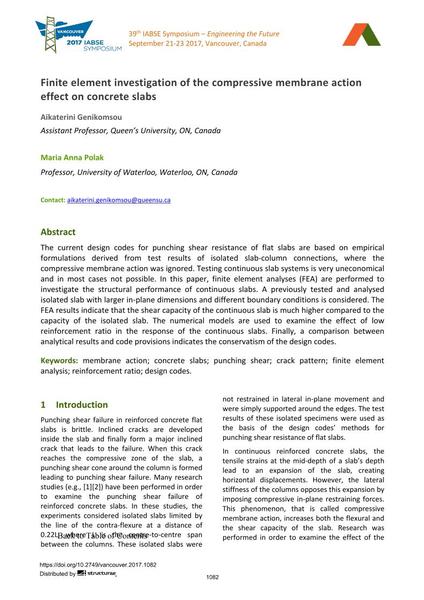Finite element investigation of the compressive membrane action effect on concrete slabs

|
|
|||||||||||
Détails bibliographiques
| Auteur(s): |
Aikaterini Genikomsou
(Assistant Professor, Queen’s University, ON, Canada)
Maria Anna Polak (Professor, University of Waterloo, Waterloo, ON, Canada) |
||||
|---|---|---|---|---|---|
| Médium: | papier de conférence | ||||
| Langue(s): | anglais | ||||
| Conférence: | IABSE Symposium: Engineering the Future, Vancouver, Canada, 21-23 September 2017 | ||||
| Publié dans: | IABSE Symposium Vancouver 2017 | ||||
|
|||||
| Page(s): | 1082-1088 | ||||
| Nombre total de pages (du PDF): | 7 | ||||
| Année: | 2017 | ||||
| DOI: | 10.2749/vancouver.2017.1082 | ||||
| Abstrait: |
The current design codes for punching shear resistance of flat slabs are based on empirical formulations derived from test results of isolated slab-column connections, where the compressive membrane action was ignored. Testing continuous slab systems is very uneconomical and in most cases not possible. In this paper, finite element analyses (FEA) are performed to investigate the structural performance of continuous slabs. A previously tested and analysed isolated slab with larger in-plane dimensions and different boundary conditions is considered. The FEA results indicate that the shear capacity of the continuous slab is much higher compared to the capacity of the isolated slab. The numerical models are used to examine the effect of low reinforcement ratio in the response of the continuous slabs. Finally, a comparison between analytical results and code provisions indicates the conservatism of the design codes. |
||||
